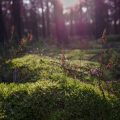The Allure of British Wildflowers
Step into the rolling hills and patchwork meadows of the British countryside, and you’ll find yourself enchanted by a tapestry of wildflowers—each bloom a delicate brushstroke across an ancient landscape. These wildflowers are not merely fleeting bursts of colour; they are threads woven deep into the nation’s soul. From the poetic daffodils immortalised by Wordsworth to the bluebells carpeting ancient woodlands in spring, British wildflowers have long inspired artists, writers, and dreamers alike. Their subtle fragrances, whimsical forms, and ever-changing hues evoke memories of childhood rambles, lazy picnics, and stories whispered by hedgerows. To seek them out is to connect with a heritage as old as the land itself—a living story told in petals and leaves, unfolding with each new season. In this guide, we invite you to immerse yourself in the sensory richness and cultural legacy of wildflower spotting in Britain, discovering how these blooms create a deep sense of place that endures through centuries.
2. Best Seasons and Scenic Locations for Spotting
The British countryside stirs to life with wildflowers as the seasons turn, offering a shifting tapestry of colour that delights the keen-eyed wanderer. Timing and location are everything for those hoping to catch nature’s most dazzling displays. Whether you’re strolling through ancient woodlands carpeted with bluebells or wandering windswept coastal meadows, knowing when and where to look transforms your wildflower spotting into a magical adventure.
When Meadows Burst Into Bloom
Spring marks the first awakening, when woodlands become draped in a haze of bluebells and primroses peep through dappled shade. Early summer follows with lush meadows, alive with oxeye daisies and buttercups swaying in gentle breezes. By late summer, chalk grasslands shimmer with orchids and scabious under wide skies.
| Season | Iconic Wildflowers | Typical Locations |
|---|---|---|
| Early Spring (March–April) | Primrose, Wood Anemone | Woodland edges, hedgerows |
| Mid-Spring (Late April–May) | Bluebell, Cowslip | Ancient woods, open pastures |
| Early Summer (June) | Oxeye Daisy, Buttercup | Lowland meadows, village greens |
| Midsummer (July–August) | Pyramidal Orchid, Knapweed | Chalk downs, grasslands |
| Late Summer (August–September) | Devil’s-bit Scabious, Heather | Moorlands, heathland fringes |
Quintessential Landscapes to Explore
The UK boasts a rich patchwork of habitats perfect for wildflower spotting. In springtime, head to Sussex or Yorkshire woodlands for carpets of bluebells beneath stately oaks. As summer unfolds, the Cotswolds’ rolling hills offer classic hay meadows awash with buttercups and red clover. Seek out coastal headlands in Cornwall or Pembrokeshire to find thrift and sea campion braving salt-laden winds.
Treasured Wildflower Havens Across Britain
- Ashridge Estate (Hertfordshire): Renowned for bluebell woods in late April and May.
- Skomer Island (Pembrokeshire): Coastal slopes ablaze with sea pinks and campion in early summer.
- Cotswold Commons: Traditional hay meadows glow with midsummer colour.
- Dorset Downs: Chalk grasslands teeming with rare orchids by July.
- The North York Moors: Heather moorland turning purple in August.
A Thoughtful Approach
No matter the season or region, approach each landscape gently—tread lightly on paths, take only photographs, and allow the quiet beauty of Britain’s wildflowers to unfold at its own pace. Each visit becomes a story of place and time: a memory painted in petals and sunlight along old green lanes and open fields.

3. Iconic British Wildflowers: What to Look For
As you meander through ancient woodlands, sunlit meadows, or along winding rural lanes, your journey is graced by the presence of Britain’s most iconic wildflowers. Each species, with its distinct character and subtle beauty, weaves a story into the countryside’s living tapestry.
Bluebells: The Enchanting Carpet
In late spring, swathes of bluebells transform British woods into ethereal seas of indigo and violet. Their delicate, nodding heads create a misty understorey beneath budding oaks and beeches. The native English bluebell (Hyacinthoides non-scripta) is cherished for its sweet fragrance and deep-blue hue—a sure sign that you are witnessing one of Britain’s most magical seasonal displays. Look for their gently curled petals and slender stems, often standing close together in damp, shady glades.
Primroses: Heralds of Spring
Before the bluebells arrive, primroses (Primula vulgaris) light up grassy banks and hedgerows with their soft yellow blooms. These gentle harbingers are among the first to brave the chilly air of early spring. Their rosettes of crinkled green leaves and pale lemon flowers evoke childhood memories of rambling through the countryside—reminding us that new life stirs even as winter lingers. Primroses play an important role for early pollinators, offering sustenance when little else is in flower.
Poppies: Fields Aflame
Come summer, fields are set alight with the vibrant red of poppies (Papaver rhoeas). These wildflowers have come to symbolise remembrance across Britain, their fragile scarlet petals fluttering amid cornfields and on roadside verges. Poppies thrive in disturbed soil—a poignant reminder of their resilience after war. Spotting a drift of poppies against golden wheat offers a moving connection to both nature and history.
Foxgloves: Towers in the Shade
Standing tall in dappled woodland clearings or along shaded banks, foxgloves (Digitalis purpurea) command attention with spires of purple bells. Their speckled throats invite bumblebees deep inside, playing a vital role in woodland pollination. Foxgloves’ mysterious beauty has woven them into British folklore—once believed to be worn as gloves by fairy folk. Exercise caution: while they enchant the eye, all parts are highly toxic if ingested.
The Ecological Role of Wildflowers
These beloved wildflowers are more than fleeting wonders; they support myriad insects, birds, and mammals in a finely balanced rural ecosystem. By learning to identify them—and understanding their place within our countryside—you become part of an ancient tradition: walking softly among wild blooms, attuned to nature’s quiet stories.
4. Wildflower Spotting Etiquette and Conservation
As you wander the patchwork lanes and windswept meadows of the British countryside, it’s vital to tread gently—both for your own experience and for the wildflowers themselves. The countryside is a living tapestry, where every petal and blade of grass plays its part. Observing with care preserves these fleeting treasures for generations yet to come.
Walk Lightly: Respectful Tips for Observing Without Harming
Wildflowers are delicate, their habitats easily damaged by an overzealous step or curious hand. The golden rule: take nothing but photographs, leave nothing but footprints. Stay on established paths whenever possible, avoiding trampling on blooms or disturbing the surrounding undergrowth. If you kneel to admire a bluebell or snap a photo of a rare orchid, do so with awareness—every gentle move helps protect future displays.
| Do | Dont |
|---|---|
| Stick to marked footpaths | Pick or uproot wildflowers |
| Observe from a respectful distance | Tread on or disturb fragile plants |
| Use a guidebook or app to identify species | Leave litter behind |
| Share sightings respectfully online (without precise locations for rarities) | Disclose sensitive sites that could attract crowds |
Honouring Countryside Traditions
The British countryside is steeped in traditions that honour nature’s rhythms. From ancient rights of way to village May Day garlands woven with cow parsley and hawthorn, wildflowers have long held a cherished place in rural life. When out spotting, respect local customs—greet fellow walkers with a friendly “morning,” close gates behind you, and heed any notices from landowners or conservation groups. These small courtesies knit you into the ongoing story of the land.
Supporting Local Conservation Efforts
If you wish to give back, consider supporting local wildlife trusts or volunteering with conservation projects. Donations help fund meadow restoration, while hands-on workdays might see you planting seeds for next spring’s bloom. Even spreading awareness within your community can foster greater appreciation and protection for Britain’s botanical riches.
A Shared Responsibility
The beauty of wildflower spotting lies not just in what we find but in how we cherish what we see. By walking lightly, respecting traditions, and supporting conservation efforts, we ensure that the bluebells of the Chilterns and the primroses of Devon remain more than memories—they become gifts passed forward with care.
5. Becoming Part of the Landscape: Stories and Traditions
Wandering through the British countryside, wildflowers are more than just a feast for the eyes—they are storytellers, quietly woven into the tapestry of local life. Step into village lanes or cross dew-dappled meadows at dawn, and you’ll be following in the footsteps of generations who saw these blooms as symbols, omens, and companions in daily rituals.
From ancient times, wildflower gathering was not only a pastime but an act rich with meaning. Children would pluck primroses and bluebells to weave into posies—a tradition as old as the hedgerows themselves. These small bouquets were often gifted to neighbours or pressed within books, tokens of affection that lingered long after petals had faded.
Midsummer Magic and May Day Blooms
When June sun lingers late, meadows burst with ox-eye daisies and buttercups, setting the stage for midsummer celebrations. In many villages, young people would rise before dawn on May Day to wash their faces in dew believed to bring beauty and luck. Garlands of cow parsley or hawthorn would deck cottage doors—each flower holding a story, each ritual echoing the land’s gentle rhythms.
The Role of Wildflowers in Village Life
Wildflowers also found their place at heart of village festivities. Cornflowers and poppies adorned harvest crowns; foxgloves were believed to shelter fairy folk, their presence respected by both children and elders. Even now, certain lanes are known locally as ‘bluebell woods’ or ‘cowslip banks’, their names a living map of floral abundance.
Keeping Traditions Alive
Today’s countryside wanderers become part of this unfolding story. By learning local lore—perhaps from a chatty walker on a stile or an old signpost naming “Primrose Hill”—you connect with centuries past. Each wildflower spotted is not just a momentary delight but an invitation to step quietly into tradition, letting the landscape’s stories become your own.
6. Practical Tips for a Successful Wildflower Ramble
The British countryside beckons with its gentle meadows and winding hedgerows, each footpath promising hidden petals and fragrant secrets. To make the most of your wildflower spotting adventure, a touch of preparation is key. Here are some heartfelt and practical tips to ensure your ramble is as rewarding as the views themselves.
Essentials to Pack
First things first: sturdy walking boots are a must, especially if you’re venturing onto muddy bridleways or dew-kissed fields at dawn. The weather can be as changeable as the blooms themselves, so layer up with a waterproof jacket and bring a hat for both sun and sudden showers. A pocket-sized field guide—perhaps one dedicated to British wildflowers—will become your trusty companion, offering insight into every delicate bloom you encounter.
Recording Your Discoveries
There’s magic in capturing the fleeting beauty of a bluebell wood or a lone cowslip by a stone wall. Bring along a small notebook or use an app on your phone to jot down sightings; note the date, location, and any memorable details about colour or scent. For those keen to contribute to conservation, consider logging your findings with local wildlife trusts or citizen science projects—the data helps protect these habitats for generations to come.
Staying Safe and Respectful
The countryside is a living tapestry, shared by farmers, wildlife, and wanderers alike. Stick to marked footpaths, close gates behind you, and resist the urge to pick flowers—leave them for others (and pollinators) to enjoy. Keep an eye out for livestock and be mindful of nesting birds in springtime. Always let someone know your route if exploring remote areas, and carry enough water and snacks for longer rambles.
Savouring the Experience
Above all, move at nature’s pace. Linger by a wild verge humming with bees or rest beneath an ancient oak where primroses cluster at its roots. Wildflower spotting is as much about noticing the shifting light on petals as it is about ticking off species from your list. Let each step remind you that the British countryside is not just a landscape—it’s a living story unfolding under wide skies.


